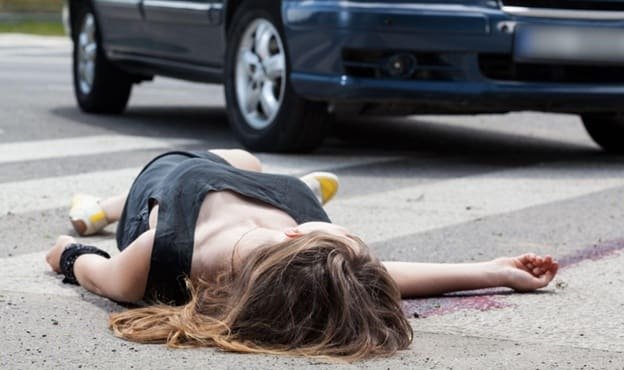The loudest sound after a crash is usually your own heartbeat, and that moment tends to stay with people longer than they expect. It is the kind of moment that makes the world feel too bright, too sharp, and too fast. That feeling is the main character here because everything that follows depends on what happens next. And Chicago is a city that never really slows down. Busy crosswalks, tight intersections, fast-turning cars, and crowded sidewalks set the scene.
That is why this guide focuses on simple steps you can take, right from the street to the paperwork stage.

Start by Grounding Yourself
Your body reacts before your thoughts catch up. So the first thing to do is breathe. That single breath helps you notice your surroundings. If you are able to move, step away from oncoming traffic or ask someone nearby to help you.
Pain sometimes shows up later. Even small aches matter and should not be ignored.
Get Medical Help Without Waiting
According to national pedestrian safety data, early medical attention plays a strong role in understanding how an injury develops. Call 911 or ask someone to call for you. Chicago responders are used to crowded areas and know how to reach accident scenes fast. Let them check you even if you think the injury is light. Medical notes from the first hour are some of the most important records later.
Emergency rooms and urgent care clinics across Chicago also handle pedestrian accident injuries regularly. It is safer to get checked even if you only feel mild soreness because it protects your health and documents your condition.
Talk to the Police at the Scene
A police report is not only paperwork. It captures the location, road condition, weather, traffic pattern, and other details you may forget as the shock wears off. Chicago intersections often have unique quirks like turning restrictions, bike lanes, or one way routes. Officers know how to record those layout details in a way that makes sense later.
Ask for the report number before leaving the scene.
Collect Your Own Small Bits of Evidence
You do not have to become an investigator here. Just do what you can.
Take photos from where you stand. Nearby signs. Traffic lights. License plates if you can see them. Your shoes. Your injuries. The car’s position. A wide shot of the intersection.
Write down the time and the nearest building or store as a landmark. Unexpectedly, those simple notes often help piece things together.
Look Around for Cameras
Chicago has more private and public cameras than most people realise. Stores. Apartments. Bus stops. Parking lots. Even small neighbourhood shops sometimes have exterior footage. You do not have to ask for the footage yourself. Just note the possible locations so police or a legal team can request it later.
Find Witnesses If Possible
If anyone nearby saw the impact or the car’s speed, ask for their name and number. Even brief statements can support your version of events. People in Chicago tend to be straightforward and willing to help if asked politely.
Keep Every Medical Document
After the first checkup, follow through with your care. Keep receipts, notes, test results, prescriptions, and follow up appointment details. Save everything in one folder. Many people throw away papers because they do not realise how important those are for describing pain and long term effects.
And one more thing. Start writing a simple daily note of how you feel. Stiffness. Numbness. Difficulty walking. These notes help professionals understand the timeline of your recovery.
Speak to Your Insurance Carefully
Give clear facts only. Do not guess or try to explain what might have caused the crash. Insurers record every line you say, and small misunderstandings can slow down the claim. If an adjuster asks for a recorded statement, it is okay to say you want to speak with a legal professional first.
Think About Getting Legal Guidance
This is not a sales pitch. It is simply practical.
Legal teams who work in pedestrian accident cases often take the pressure off your shoulders. They help collect records, speak with insurers, track deadlines, and find additional evidence. For example, Walner Law pedestrian accident attorneys work with Chicago cases regularly and understand the common injury patterns and traffic behaviours seen across the city. Mentioning them here gives the keyword context and avoids making it feel forced.
Avoid These Common Mistakes
A quick list you can return to:
- Leaving the scene without talking to police
• Not getting checked by a doctor
• Throwing away medical receipts
• Making long statements to insurance too early
• Ignoring symptoms that come later
• Accepting a fast settlement without reviewing future medical needs
Build a Simple Folder to Stay Organised
Digital or paper. Either works.
Keep copies of the police report, medical records, witness notes, photos, and every bill. You will thank yourself later. Anything that looks small now may carry weight later.
A Final Word to Steady the Moment
Accidents shake people more than they expect. Taking these steps gives structure to a chaotic situation and helps you regain a sense of control. The right support makes the process easier to move through, especially in a fast moving city like Chicago.
If you want guidance from someone familiar with how Chicago pedestrian accident claims unfold, you can reach out to Walner Law pedestrian accident attorneys who understand the city and the process with clarity.

Our dedicated team gathers information from all the reliable sources to make the law accessible and understandable for everyone. We provide the latest legal news stories from across the country, delivered straight to you.
